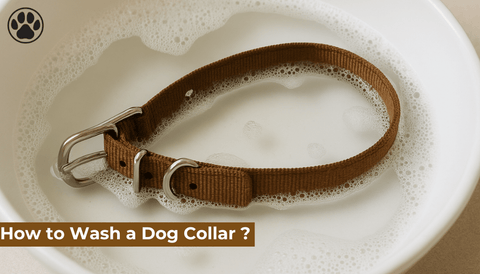
Can Dogs Eat Raw Chicken Bones ?
of reading - words
The question of whether dogs can eat raw chicken bones is a common concern for pet owners. While raw feeding has gained popularity, understanding the benefits and risks of feeding raw bones is crucial to keeping your dog healthy and safe. In this guide, we will explore the nutritional benefits, potential dangers, and best practices for feeding raw chicken bones to dogs.
Are Raw Chicken Bones Safe for Dogs?
Many experts in canine nutrition suggest that raw chicken bones are generally safe for dogs to consume. Unlike cooked bones, raw bones are softer, making them less likely to splinter and cause internal damage. However, there are essential factors to consider before introducing them into your dog’s diet.
Benefits of Feeding Raw Chicken Bones to Dogs
Natural Source of Nutrients
Raw chicken bones contain essential nutrients like calcium and phosphorus, which support strong bones and teeth in dogs. These minerals play a significant role in overall health, particularly for growing puppies and senior dogs.
Supports Dental Health
Chewing on raw bones helps remove plaque and tartar, promoting better oral hygiene. The gnawing action can help prevent periodontal disease and keep your dog’s teeth strong and clean.
Mental Stimulation and Exercise
Chewing bones provides mental stimulation, reducing boredom and destructive behavior. It also exercises the jaw muscles, promoting a healthy bite strength.
Risks of Feeding Raw Chicken Bones
Choking Hazard
Some dogs, particularly those that gulp their food without chewing properly, may be at risk of choking on bones. It’s important to monitor your dog when feeding them raw bones to ensure they chew appropriately.
Risk of Bacterial Contamination
Raw chicken may contain harmful bacteria like Salmonella and E. coli. While most dogs have a strong digestive system capable of handling bacteria, there is still a risk of foodborne illness, especially for immunocompromised pets or owners.
Potential for Intestinal Blockage
Swallowing large pieces of bone can cause an intestinal blockage, leading to severe health complications. Dogs should always be supervised when chewing bones to prevent accidental ingestion of large fragments.
Best Practices for Feeding Raw Chicken Bones to Dogs
Choose the Right Type of Bones
Opt for soft, non-weight-bearing bones such as chicken wings, necks, and backs. Avoid large, dense bones that could lead to dental fractures or digestive issues.
Supervise Your Dog
Never leave your dog unattended when eating raw bones. Observe how they chew and ensure they do not swallow large chunks that could cause choking or blockages.
Feed in Moderation
Raw bones should be an occasional treat, not a primary food source. Overfeeding bones can lead to constipation or an imbalance in calcium intake.
Maintain Hygiene Practices
To prevent bacterial contamination:
-
Store raw chicken bones in a sealed container in the refrigerator
-
Wash your hands thoroughly after handling raw bones
-
Clean your dog’s eating area and any surfaces that come in contact with raw bones
Alternatives to Raw Chicken Bones
If you’re concerned about feeding raw chicken bones, there are several safer alternatives:
Commercially Prepared Raw Diets
Many raw dog food brands offer balanced, pre-prepared meals that include finely ground bones, reducing the risk of choking and contamination.
Bone Broth
A great alternative for dogs that cannot chew bones, bone broth provides nutrients like collagen, glucosamine, and calcium, supporting joint health and digestion.
Dental Chews and Toys
Veterinarian-approved dental chews and rubber toys can provide similar benefits to chewing bones without the risks of bacterial contamination or intestinal blockage.
Signs of a Problem After Eating Raw Chicken Bones
Even with proper precautions, some dogs may still experience adverse reactions to raw chicken bones. Contact your veterinarian immediately if you notice any of the following symptoms:
-
Vomiting or gagging
-
Lethargy or weakness
-
Blood in stool or diarrhea
-
Signs of abdominal pain (whining, restlessness, bloating)
-
Constipation or difficulty defecating
FAQ
Can puppies eat raw chicken bones?
Yes, but only soft, small bones like chicken necks and wings. Always supervise your puppy to ensure safe chewing.
What happens if my dog swallows a large piece of raw bone?
Monitor your dog closely. If they exhibit vomiting, lethargy, or difficulty passing stool, contact a veterinarian immediately.
Are cooked chicken bones dangerous for dogs?
Yes, cooked bones splinter easily, posing risks of intestinal perforation and choking. Never feed your dog cooked bones.
Can dogs get salmonella from raw chicken bones?
Dogs have strong stomach acid, which helps break down bacteria, but there is still a risk of infection. Practicing proper hygiene reduces this risk.
How often can I feed my dog raw chicken bones?
Feed raw bones in moderation, around 1-2 times per week as a supplement to a balanced diet.
Conclusion
Raw chicken bones can be a nutritious and enjoyable treat for dogs when given safely. While they provide essential nutrients, dental benefits, and mental stimulation, they also pose risks such as choking, bacterial contamination, and intestinal blockage. By following best practices, choosing the right bones, and monitoring your dog closely, you can make informed decisions about including raw bones in their diet. If you’re unsure, consult your veterinarian to determine what’s best for your furry friend.




